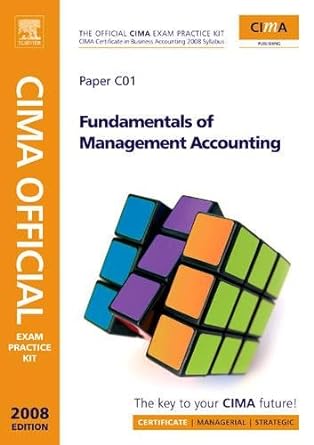Answered step by step
Verified Expert Solution
Question
1 Approved Answer
Waves Galore, Inc. manufactures hair curlers and blow-dryers. The handheld hair curler is Waves Galore's high volume product, 80,000 units annually. It is a large
Waves Galore, Inc. manufactures hair curlers and blow-dryers. The handheld hair curler is Waves Galore's high volume product, 80,000 units annually. It is a "large barrel", 20-watt, triple-heat appliance designed to appeal to the teenage market segment with its glow-in-the-dark handle. The handheld blow-dryer is Waves Galore's lower-volume product, 40,000 units annually. IT is a three-speed, 2,000 watt appliance with a "cool setting" and a removable filter. It also is designed for the teen market. Both products require 1 hour of direct labor for completion. Therefore, total annual direct labor hours are 120,000 (80,000 + 40,000). Expected annual manufacturing overhead is $441,600. Thus, the predetermined overhead rate is $3.65 per direct labor hour. The direct material cost per unit is $5.25 for the hair curler and 9.75 for the blow-dryer. The direct labor cost is $8.00 per unit for the hair curler and blow-dryer. Waves Galore purchases most of its parts from suppliers and assembles the finished products at its Fargo, North Dakota plant. It recently adopted activity-based costing, which after year-end will totally replace its traditional direct labor-based cost accounting system. Waves Galore has identified the following six activity cost pools and related cost drivers and has assembled the following information. Activity Cost Pool Cost Driver Estimated Overhead Expected Use of Cost Drivers Expected Use of Drivers by Product Curlers Dryers Purchasing Orders $57,500 500 170 330 Receiving Pounds 42,000 140,000 58,000 82,000 Assembling Parts 166,000 830,000 415,000 415,000 Testing Tests 52,000 130,000 82,000 48,000 Finishing Units 60,000 120,000 80,000 40,000 Packing and shipping Cartons 60,500 12,100 8,040 4,060 $438,000 Instructions: (a) Under traditional product costing, compute the total unit cost of both products. Prepare a single comparative schedule of the individual costs by products, in the format provided below. (b) Under ABC, prepare a schedule showing the computations of the activity-based overhead rates (per cost driver). (c) Prepare a schedule assigning each activity's overhead cost pool to each product based on the use of cost drivers. (Include a computation of overhead cost per unit, rounding to the nearest cent.) (d) Compute the total cost per unit for each product under ABC. (e) Classify each of the activities as a value-added activity or a non-value-added activity. (f)(1) Comment on the comparative overhead cost per unit for the two products under ABC. (f)(2) Comment on the comparative total costs per unit under traditional costing and ABC
Step by Step Solution
There are 3 Steps involved in it
Step: 1

Get Instant Access to Expert-Tailored Solutions
See step-by-step solutions with expert insights and AI powered tools for academic success
Step: 2

Step: 3

Ace Your Homework with AI
Get the answers you need in no time with our AI-driven, step-by-step assistance
Get Started


